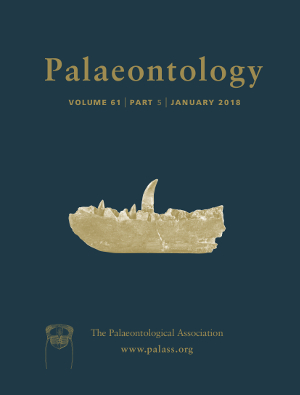Reg. Charity No. 1168330

Trilobites are particularly common Cambrian fossils, but their trophic impact on the rapidly evolving marine ecosystems of that time is difficult to assess, due to uncertainties on how diverse their feeding habits truly were. Gut anatomy might help to constrain inferences on trilobite feeding ecology, but preservation of digestive organs is exceedingly rare. Muscle scars on the glabella, known as ‘frontal auxiliary impressions’ (FAIs), have been interpreted as evidence of the evolution of a pouch‐like organ with powerful extrinsic muscles (i.e. a crop) in some trilobites. Here we describe FAIs in Mesolenellus hyperboreus from Cambrian Stage 4 strata of North Greenland, which represents the oldest example of such structures and their first report in the Suborder Olenellina. Mesolenellus FAIs suggest that the crop in trilobites was clearly differentiated from the rest of the digestive tract, and essentially located under a hypertrophied glabellar frontal lobe. Reviews of the digestive anatomy of trilobite sister‐taxa and the glabellar morphology of the oldest‐known trilobites suggest that the gut of the trilobite ancestor was an essentially simple tract (i.e. no well‐differentiated crop) flanked laterally by numerous midgut glands. A crop first evolved in the Cambrian in groups like olenelloids and (later) paradoxidoids. Using ichnological evidence, we hypothesize that the emergence of olenelloids yields evidence for the evolution of predatory inclinations in a group of arthropods originally dominated by surface‐deposit‐feeders. By allowing the exploitation of a rapidly developing food source, infaunal animals, the diversification of feeding strategies in trilobites might partially explain their unparalleled evolutionary success.